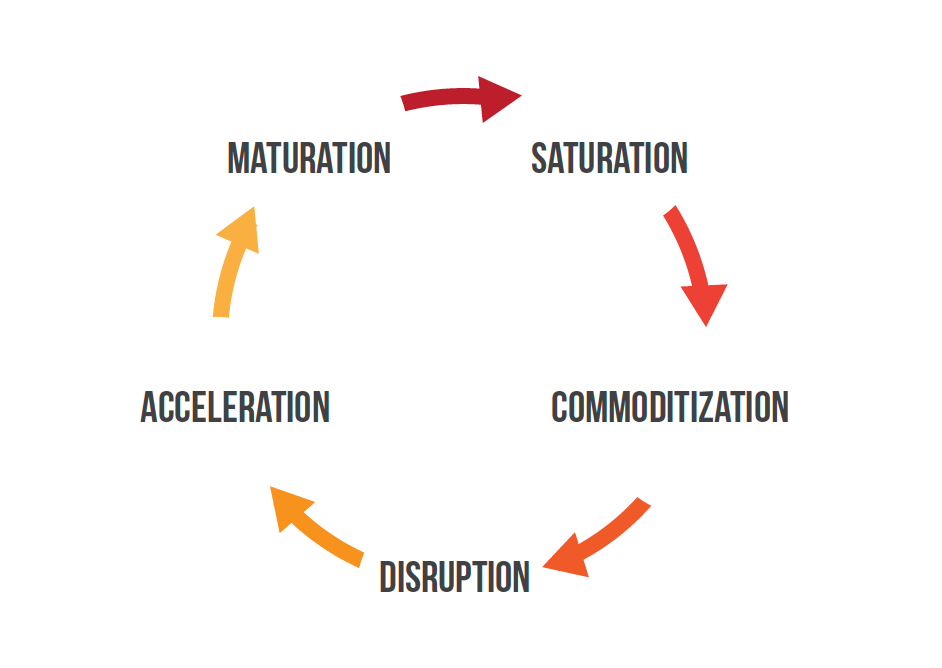Insights
An Early Warning System for Commoditization
By Jonathan David Lewis
The research is in, and it’s officially terrible to be commoditized. Based on our recent research among top business decision makers and C-Suite executives, commoditized companies report broken business models and shrinking relevance leading to unhealthy work environments, declining margins and self-centeredness.
And worst of all, companies rarely know they are commoditized until they are fully feeling its effects. But what if you could know you were about to be commoditized before you fell victim to its blackhole-like gravity?
What if an early warning system were in place to give you precious time to take corrective action?
Based on our new research, such signals exist.

To find the unique characteristics of companies heading towards commoditization, we explored the factors that affect growth across the business lifecycle. Not surprisingly, organizations that were just past Maturation but not yet in Commoditization displayed unique characteristics.
Together these five “Pre-Commoditization” characteristics represent an early warning system that if monitored and acted upon, could give companies the time they need to deal with the last, and most painful, phase in the cycle.
Early Warning Signals
1. Opportunism: Pre-Commoditized companies demonstrate inconsistent behavior and are the most likely to agree with the statement “We’re more opportunistic than strategic.” Opportunism creeping into your decision-making process could represent a shift towards commoditization and should be taken seriously.
2. Paralysis: Pre-Commoditized companies are also the most likely to agree with the statement “We tend to overthink things.” Analysis paralysis is real, and organizations that are moving towards commoditization suffer from it.
3. Self-Centeredness: As we recently discussed, our research shows a significant shift in what leaders worry about as growth stalls. Leadership in companies experiencing growth are more likely to be concerned with marketplace challenges like competition and technology, while organizations heading towards commoditization prioritize internal challenges like miscommunication and leadership. If you find yourself spending a lot of time on internal needs, and not your customers’, you should worry.
4. Disorientation: Leaders in organizations heading toward commoditization are the most likely to agree with the statement “Our company is lost.” Mixed signals from the marketplace tend to disorient leadership teams. If leaders feel lost, it’s possible they are.
5. Slowed Growth: Perhaps the most straight forward and measurable of the early warning signals, slowed growth is a key signal that an organization is about to be commoditized. Look for trends versus blips, but if slowed growth becomes the norm, marketplace saturation and eventual commoditization could be underlying factors.
Combined, these signals make up an early warning system for commoditization. If you’re already commoditized, don’t despair, there are steps you can take to regain momentum. For the rest, you’ve been warned. Like any early warning system, it’s only useful if heeded.
Diagnose your organization by taking our 60-second self-diagnosis survey.

Jonathan David Lewis
President and author, Jonathan specializes in the spirit of the matter. Call Jonathan when problems feel ambiguous and morale is low. He’ll know what to do.
Sign Up for Growth Insights
"*" indicates required fields
Contact
"*" indicates required fields